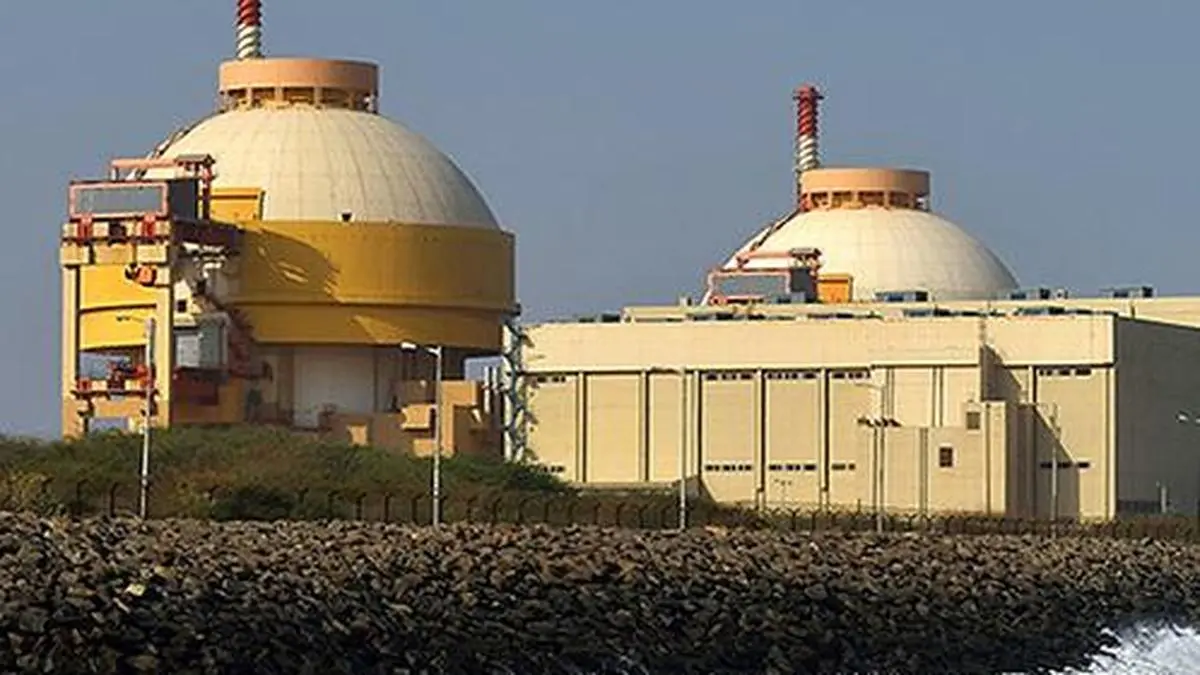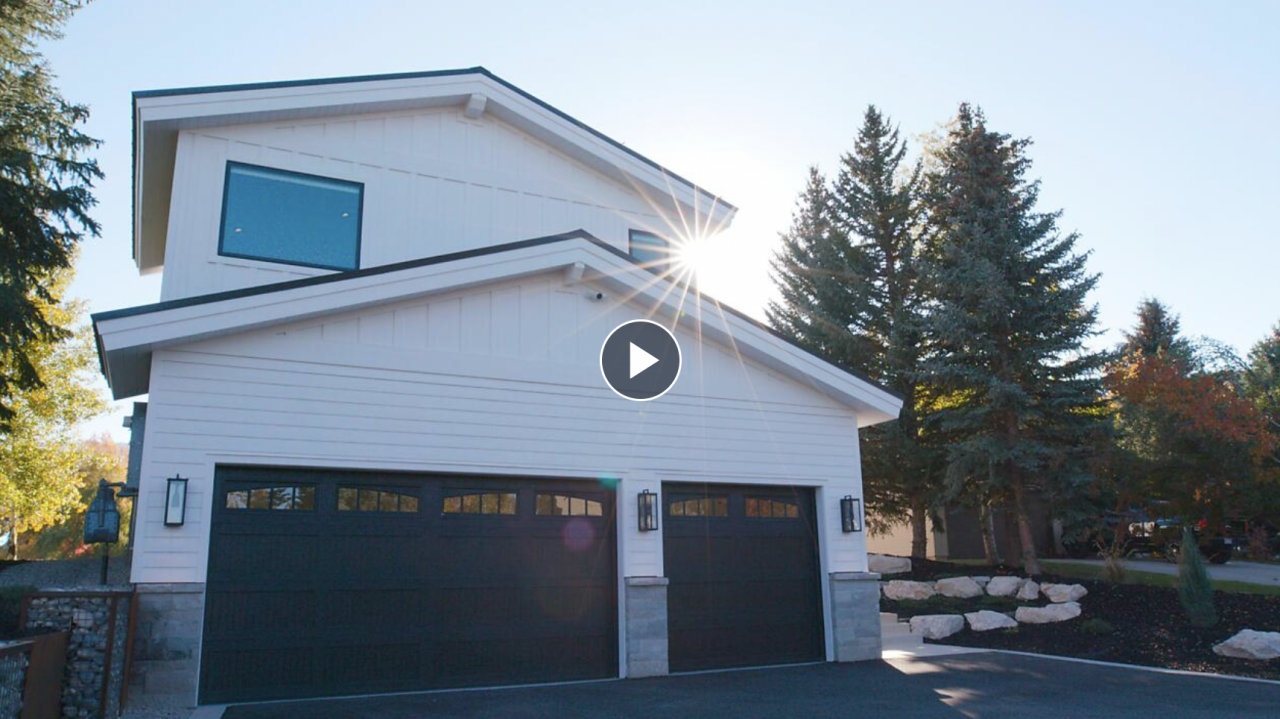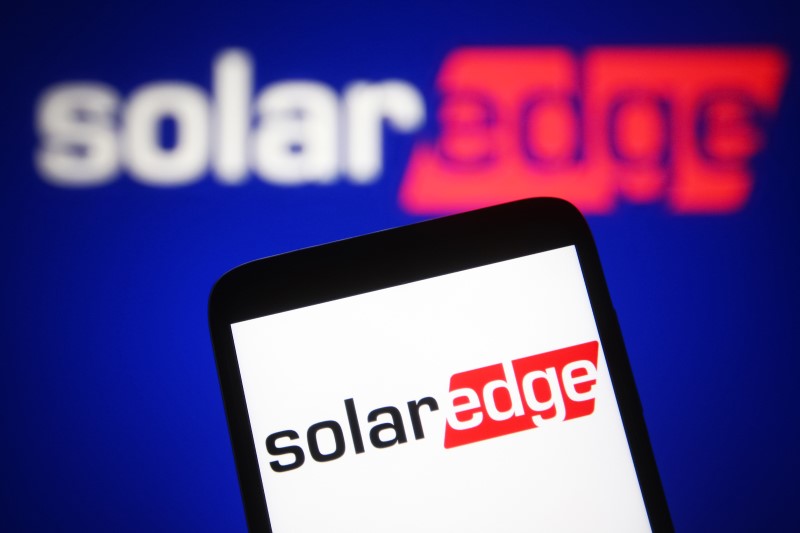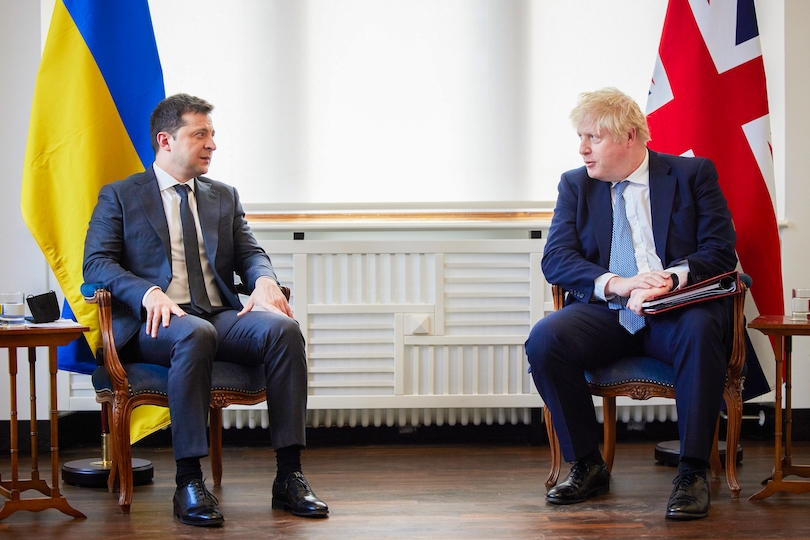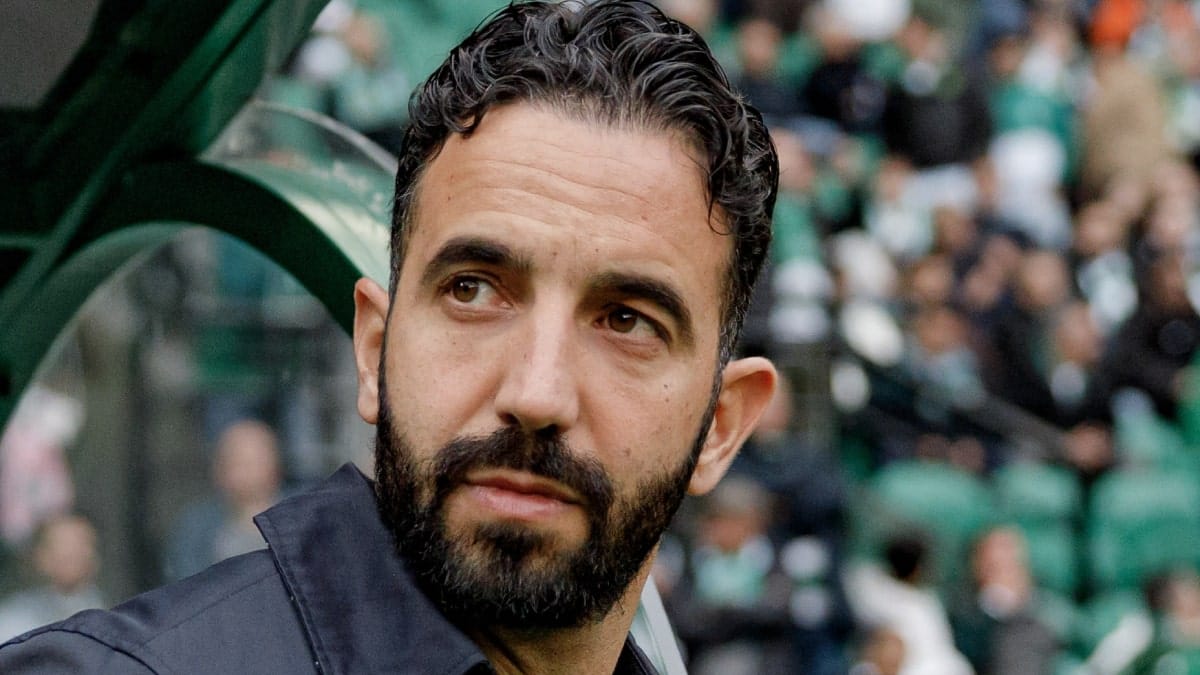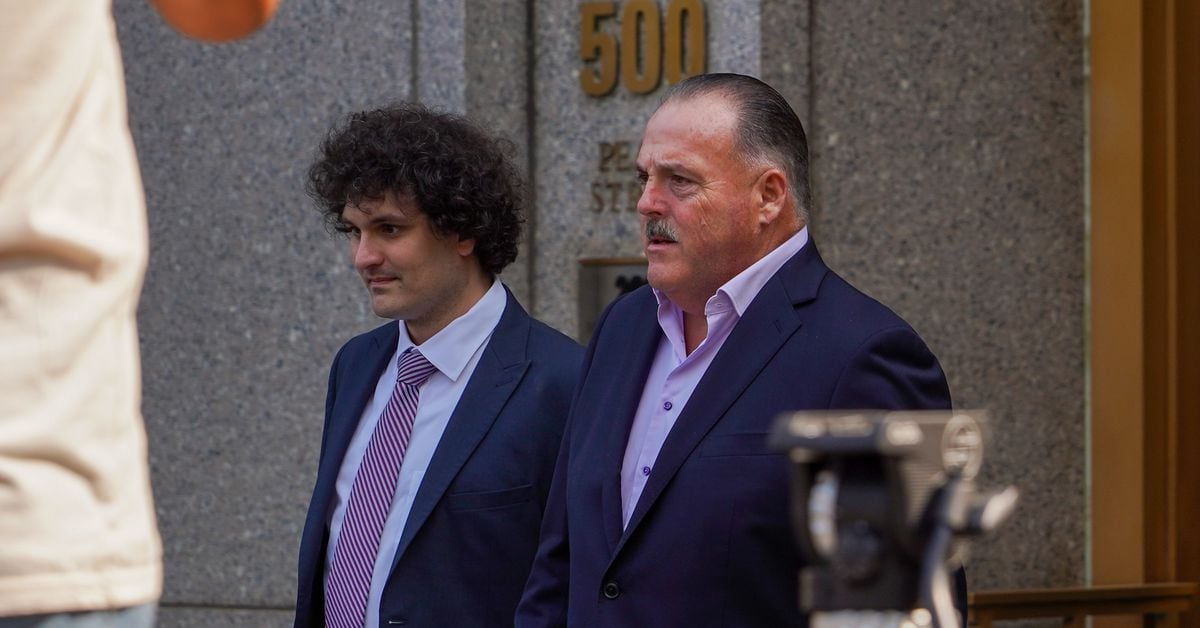AB SKF (publ) (OTCPK:SKFRY) Q3 2022 Results Conference Call October 25, 2022 3:00 AM ET
Company Participants
Patrik Stenberg – Head of IR
Rickard Gustafson – CEO
Niclas Rosenlew – CFO
Conference Call Participants
Klas Bergelind – Citi
James Moore – Redburn
Andreas Koski – BNP Paribas
Yifan Zhang – Goldman Sachs
Erik Golrang – SEB
Patrik Stenberg
Thank you, and good morning to you all, and welcome to this conference call on SKF’s third quarter results. As usual, we will start with the presentations hosted by Rickard Gustafson, our CEO; and Niclas, our CFO. After those presentations, we are happy to take on your questions. You could use either your phone as instructed previously here or you could use the chat function as you prefer. With that very brief introduction, I’ll leave the word to Rickard, please.
Rickard Gustafson
Thank you, Patrik, and good morning, everyone, and welcome to this interim report for the third quarter. I’ll start by sharing that we continue to deliver on our intelligent and cleaning growth framework. And I’m very pleased to report that we have very strong traction on all 4 growth levers that we have defined within our strategic framework. We see that the key megatrends that are sweeping across the globe, such as electrification, digitalization, automation and also sustainability provides a strong ground for growth for SKF. And as you can see on this illustration to the right-hand side of this chart, we record once again, solid double-digit growth in many of our focus industries such as material handling, automation, agriculture and high-speed rotation.
There’s also one key outlier here and that’s electrical vehicles that are growing 66% in the quarter. And I will come back to more details around that when we touch on our automotive business later on in this presentation. When it comes to new technologies, we continue to make good inroads with our products and our capabilities and opening new opportunities — growth opportunities for us. Our ceramic bearings are key to the growth in EVs that I describe, and I come back to them as well in the automotive section. Another proof point in this quarter is the fact that our magnetic bearings has been selected to power Tamturbo’s new generation of compressors.
So that’s a big win for us in the quarter. When it comes to service and aftermarket, it is an important piece to our total service offering to our customers. We use our broad capabilities here to really make sure they provide the right value to the customers and that will create loyalty and stickiness with our customer base by leveraging all of our components and technologies within lubrication, seals, bearings, condition monitoring and so forth. And in this quarter, we have signed a very significant condition monitoring contract with a large packaging producer in North America that I will share some more details on as well during this presentation. And in terms of portfolio management, it’s key to us.
We continue to work actively to look for how we can fix accounts that are not delivering on the profitability levels that we expect. Or if we can try to exit some parts of our portfolio that may not be strategic or at the very margin that is not in line with where we want to be. This is happening across the board and it’s very particular within our automotive business, and we’ll talk a bit more about that as we move into this presentation as well. On top of this, we have also worked hard to accelerate the components of our strategic framework that relates to cost efficiency, and today we announced some progression also in that regard that you will see during the presentation. Now let’s begin to the numbers.
And as I mentioned, the strong growth has been really strong in the quarter, and we have an organic sales growth of roughly 11% in the quarter. And again, I’m very pleased to report that most of that organic growth comes from those industry segments that we really want to grow in, that is part of our strategic intent and our strategic framework. So net sales come in at roughly SEK 25 billion, up from NOK 2.1 billion last year. If you include FX, it’s a 24% growth, but organically, it’s 11%. The adjusted operating profit came in at SEK 2.1 billion with a margin just shy of 9%, 8.5%, down from 13.3% in the same quarter last year.
This is, of course, nothing that we are very pleased about. We do see that a significant cost inflation in the quarter, especially in Europe, has impacted our results negatively, despite the fact that we are driving our price and mix activities successfully. And I’m going to share some more details on this shortly to give you some more flavor on how the cost has evolved in the quarter and also our progression, our capabilities to drive price in this environment. Net cash flow comes in at SEK 1.3 billion, down from SEK 2.5 billion last year to large extent due to the fact that the operating profit has come down a bit, and that is also reflected in the cash flow. But before I move on to the details, I’d also like to take this opportunity to welcome 2 new members of my management team.
As of — since a week back, we have a new Chief Technology Officer on board and that’s Annika Olme. And we also, since a week — a couple of weeks back, we have a new leader for our China and Northeast Asia business with Henry Wang. Both of them, we welcome back to SKF. They have previous experience with the company. They have done professional careers outside the group, and they’re now coming back to help us drive our strategic framework forward.
And I’m delighted to have both of them on board and being part of my team. But if we take a look more into this cost inflation and price momentum that we have. And if I start with the price momentum, and I’d like to draw your attention to the dark blueish or blackish bars on this chart. As you can see, we have significantly improved as quarter-over-quarter our contribution from price/mix. If I draw your attention to the first quarter in this year, we had a positive price/mix contribution of roughly SEK 1 billion.
It grew to SEK 1.3 billion in Q2. And now in Q3, it’s up to SEK 1.8 billion, a significant improvement and it will continue as we move forward into the future as well. The problem, though, is that you can see that cost inflation, the grayish bar on this chart, have accelerated at an even higher pace. And we also need to recognize that a lot of that has happened in Europe, and in Europe, we have a significant presence. Our European business accounts for roughly 40% of our sales, but 6% of our production.
So of course, the energy crisis in Europe and the cost inflation, in general, in Europe has impacted us negatively. You can see here that the delta between price/mix and cost inflation has increased, and in the quarter we have cost inflation of SEK 2.9 billion, primarily driven by materials and energy cost. And Niclas will give you some more details about this later on in this presentation. But given that we are unhedged to our exposure both to energy and to some of this cost inflation would also indicate that once we see more normalized levels on energy and other general cost inflation, it should mean that we have a tailwind to our margins going forward. And to try to give you some proof points on that, again, I like to draw your attention to the first quarter of this year.
There, you can see that the delta between the price/mix and cost inflation started to ease off a bit. We came from SEK 1.5 billion to SEK 1.6 billion, and it came down to SEK 1.4 billion in Q1. And our margins at Q1 were 13.3%. Then the delta has increased and now reached kind of a record high of SEK 1.1 billion, having, of course, a negative impact on our earnings. But on a positive note, I’d like also to mention that we saw at the end of the quarter, some improvements in some of the cost items that we have in terms of the pace of inflation starting to ease off.
And now thinking about logistics, I’m also referring to some of our components for — or steel components start to ease off a bit. But this volatile environment, we are — we stay determined to continue to drive our price/mix efforts to — at some point in time fully compensate for the cost inflation, as just said now, throughout this full year. But staying within our strategic framework for few more seconds. I already touched on the growth levers that we have — the 4 growth levers. And this time, I’d also like to give you some more insights on to — within 2 important growth enablers.
The how to operate more effectively and also what we’re doing to maintain our focus to drive regionalization and enhance our competitiveness across our supply chains. But starting with operating more effectively. When we launched our strategic framework, we were very clear that as part of this, we were also changing our organizational structure. We created more autonomous business areas with full accountability end-to-end for our values, for respective value streams, our value chains. That also implied that we saw opportunities to simplify our organization, to change ways of working, to be fast to our customers and have a more agile structure in general terms.
That work has been ongoing since we launched the whole strategic framework. And now during the fall, we’ve come to a point where these now start to materialize into concrete actions and savings that we are ready to share with the broader audience. As part of this, we are announcing a delayering of our EMEA organization to drive simplicity and clear accountabilities and changing a number of the ways how we operate within EMEA that I think is going to benefit our customers. We are trying to leverage more low-cost countries for some of our white collar capabilities and labors, not just for certain competencies, but also trying to build regional service centers in different countries where it’s more attractive from a wage point of view. As I said from beginning, we said that we wanted to rethink our corporate functions, we wanted to push more of these accountabilities out into our business areas, and that is now happening, and we are changing some of the corporate functions.
And we’re also using this opportunity to look into our IT spend and our IT projects to ensure that they are fully aligned with our strategic intent. And we have found ways to also drive down some costs there within a fairly short time frame. Our connected technologies, it is an important piece of our offering, especially on the service side. We are keen and determined to continue to grow that, but we realize that we should not do it by having everything in-house. We need to leverage partners to help to build the software platforms and also the hardware on the sensors so that we can be speedy, that we can be future-proof, and that we can scale this operation more effectively together with partners.
And already in Q2, we announced one step in this direction with the announcement of the collaboration with AWS on some of the low-end sensors. And it goes without saying, when you go through these things, we’re also constantly looking to ways to reduce our consultancy spend and other indirect expenditures. So all in all, we see that we now have opportunity to reduce our cost base with some SEK 2 billion with full run rate effect by the end of 2023. It will come with a restructuring cost at roughly SEK 1 billion is our best estimate at this point, and that’s going to be impact our numbers sequentially from now through 2023. In totality, this will have an impact on a number of positions.
Roughly 1,000 positions will be redundant due to these activities with a majority of those being in Europe. On the regionalization and how we build our competitive supply chain. I’m pleased to report some good progress also in this quarter. We are today reaching out to you from our head office here in Gothenburg. And next to us, we have our factories here where we have recently inaugurated a state-of-the-art, fully automated assembly and packaging line for medium-sized roller bearings that will really drive cost efficiency and productivity in our Gothenburg factory.
We have also continued with our efforts to consolidate our footprint, especially in Europe, and we announced some closures of a factory in the U.S. and 3 factories across Europe to happen — to be completed within shortly. And also, now strive to develop a more balanced regional footprint. We have also completed our second investment in Jinan factory in China, which will really help us to increase our localization rate in China and support our China-for-China strategy. So it’s an important step on that journey as well.
So a lot of activities are also ongoing there, all in line with our — what we outlined in our strategic framework. But let’s take a look into our 2 main segments, starting with Industrial. Industrial also recorded a very, very solid organic growth in the quarter, up 8% versus the same quarter last year. And here you can see on this chart that the growth is actually coming from all parts of our region with a significant and solid growth in India and Southeast Asia, also Americas was growing nicely. EMEA has a strong single-digit growth rate, primarily driven by price where we have more a flattish volume.
While China has more a modest growth, and I think the Chinese economy is still impacted by the COVID restrictions, and that’s why we see that growth rates are more modest in that part of our footprint. Looking into some of the numbers for Industrial, I already commented on the growth and the adjusted operating margin came in just shy of 11%, down from 16.5%. Of course, this is not anything that we are pleased with, but it’s a clear indication that those — that cost inflation that I described primarily with our European manufacturing footprint is really having a negative impact on our earnings in this quarter. However, though, we are determined and we’re confident that we sit on pricing power and that we will continue to work with our customers and find ways to compensate for this cost inflation and build back our earnings over time. Also important to note that some of our business units with longer order books, they have had an even tougher time to compensate for the energy crisis and so forth and the fast volatility that we’ve seen in the quarter.
So they have a longer lead time to find ways to compensate for that. And 2 examples of that being our aerospace business and our marine business having a negative impact in this quarter. But we also have a number of success stories to tell you in the Industrial side in the quarter. I’d like to start by sharing one related to our strive towards a more sustainable future. I’m very pleased with the collaboration we have with Ovako Steel to find ways to demonstrate to the world and to ourselves that net-zero is not just something kind of a vision that is unreachable.
It’s actually something that will happen and can happen. And in this case, we have already produced a midsized bearing, a sizable bearing with a 90% less CO2 emission than a traditional bearing, a clear proof point that this is really doable. Still, of course, we need to ramp this up and scale this, but we’re excited about it. It comes from a kind of circle effort together with Ovako. Ovako, they provide us with the raw material.
The steel that we use for the bearings come from scrap steel. We then manufacture bearing here in Gothenburg at our net-zero facilities here, and then we return the finished product back to over going into their production. So it’s like kind of, again, a proof point how we see the future and what that will look like. And we are determined to play our part in the transformation towards a more sustainable future. As I mentioned in the beginning, we also signed a new agreement with a major U.S. packaging producer, and I’d like to give you some more details on that one. Again, this is a proof point how we can enter with one area of our offerings and build the relationship and let that grow from there and over time, enhance our service capabilities, our value adds to our customers and also create stickiness with our customers. This relationship started in 2019, where we got awarded to monitor one single asset of theirs. Today, our relationship with them have grown significantly. And today, we monitor more than 5,500 of their assets.
We provide a number of set of services from application engineering through lubrication management. And of course, we also provide them with bearings and also with seals, which is another important component in our total offering. Speaking about seals, last quarter, I gave you some more insights on our lubrication business. At this time, I wanted to share some details on our seals business. Seals represent a sizable part of our portfolio, roughly SEK 6 billion of revenue with attractive Industrial margins.
And why are seals important? Well, 20% of the bearings that fail is due to either contamination or poor lubrication, and that’s where the seals application play a vital role. And if we do this right and if combined these capabilities, our lubrication capabilities, our bearing expertise and our seals expertise, we can find solutions that are state-of-the-art and really solve pain points for our customers. One key example is what we’ve done within the agriculture industry with our SKF Agri Hub, where we created some — a combined offering where we combined our knowhow and expertise in these fields and created this unique offering that really works extremely well in these extreme conditions that you find within the agriculture. And that has been the foundation for a very, very solid growth within this industry for quite some time now.
And you saw on my first chart that agriculture continues to deliver solid double-digit growth. We continue to invest in our technical capabilities also within seals. Very often, we work very, very closely with our customers to define the materials and compounds that will solve their particular pain points or problems that they’re trying to solve in their applications. And we find ways to also, in a dynamic way, do product design and testing of these applications together with our customers that has been highly appreciated and proven to be successful. And also to strengthen our footprint here, we’ve done recently, as you probably have seen, a small acquisition.
We acquired a company in Italy called Tenute, that has unique — a competence in a small niche within the industrial seals segment that we’re now delighted to have as part of our portfolio. Even here, we have an emphasis on looking into portfolio management and how we want to develop this business going forward. And you will see us put more emphasis on the Industrial side of seals applications and less emphasis on the automotive side of our seals business and seals application going forward. And of course, because we do see that we have more value-add on the Industrial side, and there, we also can obtain more attractive margins. Moving on to Automotive.
Automotive also saw a significant growth in the quarter. Organic growth, up 18% versus same quarter last year. However though, I need to remind you that Q3 last year was a rather low quarter for the automotive industry. At that time, the semiconductor crisis was really intense and a number of our customers then closed — or our OEM customers, I should say, closed their operations. And of course, when compared quarter-over-quarter, it makes a somewhat difficult comparison.
But 18% growth — organic growth anyhow. You can see growth coming from all regions with significant growth in India, in EMEA and Americas, and there we see growth both on personal vehicles, light vehicles and commercial vehicles. China and Northeast Asia also see significant growth, just shy of 20%, as you can see. But here is primarily light vehicles and personal vehicles that drive growth. Commercial vehicles are still having — seeing a fairly low demand at the moment.
Looking into the Automotive numbers, I already mentioned the growth. Here, we see that the margins can come in at 3% compared to 4.5% in the same quarter last year, but it’s actually up versus our second quarter this year. So Automotive have also been impacted by the significant cost increases that we have seen, but they have also worked hard on their price mitigation actions, and they have also been successful in getting some surcharges that has also helped them to compensate for some of these energy spikes that we’ve seen, especially in Europe. Within Automotive, we are making good progress on our announced transformation. As you probably recall, we’re trying to focus on the areas within our own Automotive portfolio, where we have a clear #1 position or a #2 position, and we feel that we have an offering that is truly value add to our customers.
And this includes our focus on electrical vehicles, on large commercial vehicles and also to build our focus in the vehicle aftermarket. As part of this, we, of course, see now good momentum in our EV segment, as I said, up 66%. And a big driver for this, not the only driver, but one key driver is, of course, the constantly increased demand for our ceramic bearings within this industry. Our ceramic bearings are in high demand due to the high-speed capability and also electrical isolation capability really provides significant value for the EV industry. And in the quarter, we have signed some significant contracts with big OEMs on — for their EV platforms, both in Europe and in China.
So with that, I end the kind of formal overview part of our presentation. I’m now going to hand over to our CFO, Niclas, Rosenlew to give you some more details on our numbers. So Niclas?
Niclas Rosenlew
Thank you, Rickard. And let’s start off with some details on our sales. So in Q3, we had strong sales growth. As Rickard already mentioned, our sales was just shy of SEK 25 billion. And sales grew both sequentially and compared to last year, driven by a broad-based demand from multiple different industries as well as multiple product segments.
Compared to last year, our net sales increased by 24% total. Of this, there was a 2% negative impact from Russia — our exit of the Russian business. The organic sales increased by 11%, and this was driven both by volume and by price/mix. And the currency effect on sales was a positive 15%, with the largest effect coming from the dollar, the renminbi, the Brazilian real and the euro. So all in all, strong and good sales performance.
Moving on to our profitability, our adjusted operating profit was SEK 2.1 billion in the quarter compared to SEK 2.7 billion last year. Overall, as Rickard mentioned, we had good momentum in price/mix, which was then offset by sharply increasing costs, primarily in Europe, leading to a reduction in profitability. If we go through this step by step, firstly, the currency impact was positive at SEK 288 million compared to last year. And just to explain this number, so while we have a strong contribution on sales from, for instance, the dollar, we do have a relatively high portion of our costs in euro, resulting in a more limited benefit on our profit from FX. The Russia business was divested in Q2, and this had a negative impact of SEK 54 million, meaning that we had a profit last year, which we did not have in Q3 this year.
Our organic growth, which consists of volume, price and mix contributed with a positive SEK 2.1 billion and about 90% or SEK 1.8 billion of this is price/mix, while 10% is driven by volume. As noted, as Rickard explained, our price/mix has sequentially continued to increase, SEK 700 million in Q4 last year, SEK 1 billion in Q1, SEK 1.3 billion in Q2 and now SEK 1.8 billion in Q3. And these are year-on-year comparisons. When it comes to inflation, we did see a sharp increase in costs in Q3, especially driven by Europe. This came from energy, but also materials.
For some of the other elements, such as logistics, we actually saw inflation starting to come down a bit from high levels. For energy we are largely unhedged and also saw costs coming down a bit towards the very end of the quarter. So the total impact from higher costs was SEK 2.9 billion, and as a comparison, this was around SEK 2 billion last quarter. Just to give you a flavor, so SEK 2.9 billion, the component part of it is, call it 1/2 of it. So 1/2 of the SEK 2.9 million, a bit less than 1/2, while then energy added SEK 400 million approximately, salary approximately SEK 300 million.
These being the largest elements of cost inflation. So to sum up, we had a continued good momentum with sales price and mix. On the other hand, we did have a sharp increase in cost inflation, especially in Europe, resulting in a deteriorating margin. While we are confident that we will offset inflation over time, in Q3, the inflation just increased so quickly that we did not have time to offset it. Moving on to cash flow.
We generated a net operating cash flow of SEK 1.3 billion in the third quarter compared to SEK 2.6 billion in — or SEK 2.5 billion last year, mainly driven by lower operating profit and higher working capital. Just to comment on working capital. Working capital as a percentage of sales increased to 36%, mainly driven by exchange rates. Sequentially, inventories were actually pretty flat in Q3, marking a change after a year of increasing inventories. And finished goods, on the other hand, actually went down somewhat in Q3.
We’ve continued to prioritize customer deliveries as demand has stayed on a high level. At the same time, we have seen some normalization of supply chain bottlenecks, although the environment is still being quite volatile. And let’s say, regardless of these external circumstances, we will work with reducing net working capital across all of our businesses. There’s no quick fixes here. But we are confident we’ll start to see net working capital to come down.
Moving on to our balance sheet. We have a continuously strong balance sheet and good liquidity. Our net debt amounted to SEK 11.9 billion, a slight increase sequentially, driven primarily by FX, but still at very healthy levels. Return on capital employed was solid 12.6%. And also during the quarter, we’ve continued to work on our capital structure and actually successfully issued our second green bond.
And on that note, to comment on the green bond. So we successfully issued this in September, and it highlights our commitment to work with sustainability, as Rickard commented on earlier. And this was a bond of roughly SEK 400 million or actually exactly SEK 400 million, and the reception was very good and some 6x oversubscribed. It’s yet another example of our long history of working with sustainability and now also linking financing to sustainability. We’ll use the proceeds for broadly speaking 2 purposes.
Firstly, the first purpose is to strengthen our cleantech business and support our customers achieve — for them to achieve better sustainability. Secondly, we also invest in our own operations to ensure that we reach our goal to be Scope 1 and Scope 2 emission neutral by 2030 and Scope 3 neutral by 2050. And an example of internal investments is, for instance, reducing our own energy consumption by at least 25% in manufacturing. We do expect these investments to contribute positively to our competitiveness and our business. Turning to the outlook for Q4 and full year 2022.
For the fourth quarter of 2022, we expect an organic sales growth of about 10%. And as a result, we expect organic growth for the full year to end in the upper part of our previously guided range of about 4% to 8%. We do, however, expect to see continued volatility and geopolitical uncertainty in the markets. And as a result, we expect continued high levels of cost inflation, supply chain bottlenecks and volatile demand. So with that, I hand back to you, Rickard.
Rickard Gustafson
Thank you, Niclas. And I will just end this formal part of the presentation before we go into the Q&A with a summary of what we just have been through. We stay determined to deliver on our strategic framework, our intelligence and clean growth framework. And in terms of growth, as you heard, we do report a very strong organic growth, and we are pleased that the growth is actually happening in the industries where we want to be and where we want to play. We continue across the board to actively work on our portfolio management to help further improve our margins and our long-term profitability in our business.
Even though we have primarily talked about what’s going on with in Automotive. I’d like to highlight that this is an activity that’s going on in all parts on our business at the moment. We do see that we maintain our strong price/mix momentum. We will continue to drive this. The organization is fully focused on driving these activities to ensure that we do everything in our power to compensate for the ongoing cost inflation.
We are not pleased with where we are in terms of profitability in the quarter, but we’re pleased with the growth, and we’re pleased with the activities that we take to help us to come back to a more stable earnings. When it comes to operating more effectively, we really see that we are now starting to embed our new operating model and our new ways of working. And as I mentioned, I’m also very pleased that we have onboarded a couple of new leaders to the team. All the work that has been done within the organization for — throughout the spring and summer is now bearing fruit, and we have identified a way to really drive a different way of working, simplify organizational structure and reduce our overhead costs by roughly SEK 2 billion in run rate savings by the end of 2023. This is a result of a very dedicated and hard work across all parts of our business.
We maintain our efforts and emphasis to then improve our regionalization rate across our key geographies and also that we continue to drive efficiency in our supply chain. The Jinan investment in China is one example that really was concluded in this quarter that will really help drive a significant positive benefit for us in the China and Northeast Asia region. And as we also heard talk about, we are continuing on our journey to simplify our footprint — manufacturing footprint, especially in Europe with a set of additional factories being closed within the near future. So with that, we conclude the formal part of the presentation. I will now hand back to the operator to help us facilitate the Q&A session.
So thank you very much. Operator, please.
Question-and-Answer Session
Operator
[Operator Instructions] Our first question comes from Klas Bergelind of Citi.
Klas Bergelind
First, on the moving parts in the bridge, the SEK 400 million in energy costs and around SEK 300 million in wages year-over-year. I’m curious how these 2 will likely move heading into the fourth quarter, if you could give any indication of what you see now? Niclas, you made a comment that energy cost will level off at the end of the quarter, so maybe energy around the same level and wages higher quarter-on-quarter perhaps? And if you think price/mix will also turn higher quarter-on-quarter as part of your 10% guide. It looks like it with sort of flattish volume growth as a result.
I’ll start there.
Niclas Rosenlew
Well, thanks, Klas. Trying to predict energy prices in Europe is — I’ll leave it to others. But what we did see, again, was a very volatile energy cost level during the quarter. And as you rightly pointed out, we did see it coming off a bit towards the very end of the quarter. But I don’t dare, frankly, to predict how it will look like exactly in Q4.
What comes to salary inflation, you are — I would say you are right to assume that it’s more likely to go up rather than down. Yes. And price/mix, of course, I mean, as you heard throughout the presentation, it’s a high focus area for us. We’ll continue to work on it. We are confident that we’ll drive more price.
Mix is always a bit more difficult to predict, but clearly, expect continuing momentum from price/mix.
Klas Bergelind
So I guess, to be more clear, I know that you’re unhedged on energy, but I thought there was some sort of lag effect still in terms of how it hits your P&L. But is it really a one-for-one effect? Because obviously, nat gas prices are coming down sharply in Europe at the moment, which will be a positive immediately in the fourth quarter, if this is a one-on-one effect. I just want to clarify that.
Niclas Rosenlew
Well, I think it’s true that we are unhedged, but it’s not an immediate effect. I would say within a month time or so, we see the effect hitting our results. We do have some contracts, of course, and not just buying everything on a daily basis on spot prices. So there’s some lag time there. But I would say up to roughly a month lag time before you see it in our numbers.
Klas Bergelind
That’s helpful. My second one is on the volume guide. I mean, of course, it’s up to us to predict what the price/mix will be, but let’s say that it’s flattish volumes. I’m trying to understand the mix here between your outlook for China on the Industrial side where growth was only 2%, there is more to get back from the lockdowns, again, it’s potentially European industrial outlook, which is likely getting weaker. This quarter was a lot about higher production on the Auto side, but now the Industrial weakness in Europe could perhaps gradually kick in versus China gradually coming back.
Thoughts here, Rickard, on that would be useful.
Niclas Rosenlew
Maybe if I just comment first. I mean similarly to what we saw in Q3, can I expect a similar kind of ratio maybe on Auto versus Industrial. So essentially, Auto, including volumes growing quite strongly in Q4, while then Industrial maybe being a bit more muted. For the reasons that you mentioned, we do see the European economy being, of course, challenged and then China being also a bit challenged by the COVID lockdowns.
Rickard Gustafson
Yes, I’m not sure if I have so much more to add to that, Klas. I do expect that Europe will face some sort of recession, and that will, of course, impact demand. We already see that, as I mentioned in the presentation, that on a volume basis, we’re flattish in Europe. We’ll see how that’s going to evolve now in Q4. While I do believe that some of the growth pace in China is somewhat negatively impacted by the ongoing COVID restrictions, so there should be some potential opportunities for additional volume growth there as, hopefully, those restrictions ease off within a reasonable future.
Operator
Our next question comes from James Moore of Redburn.
James Moore
Perhaps I could start with the cost development line. Your minus SEK 2.858 billion line, thanks very much, Niclas, for your color on raw materials, SEK 1.400 billion; energy SEK 400 million, labor, SEK 300 million. I mean I’m going to assume logistics SEK 200 million. Even if I do that, there’s still a balancing item in here of about minus SEK 500 million, SEK 600 million, which to me is your implied savings number, which is a sort of negative SEK 500 million, SEK 600 million savings number. I know sometimes we have a negative savings number.
But I thought that the COVID-19 temporary measures, which I think from memory, were SEK 625 million, 8 quarters ago in the third quarter of ’19 had already fully reversed out a year ago. So I wondered, my first question is, can you just help us understand what’s in that balancing item? Maybe I’ll come back on the others.
Niclas Rosenlew
Hi, James. I think the — on components, and remembering, we buy very little actually of raw materials, but it’s mostly components. So on components, it’s actually — it’s a bit more than what you said. I said roughly 1/2 of the SEK 2.9 billion, maybe not fully, but anyway to that tune, while then energy SEK 400 million roughly; salary, maybe SEK 300 million roughly. And then we have things like shop supplies and so on, making up part of the remainder.
So again, a bit more on the component side and then you are roughly there from a math perspective.
James Moore
And your price cost gap, if I can call it that, is SEK 1.1 billion in the third quarter. If you were to take current spot prices for everything, do you think that this is the most negative period for that net price/cost gap and that it should improve from here? Or would you expect to get it — for it to get worse before it gets better? And my other question is, when we take this all together, there’s a lot going on with your savings plan, with the price/cost gap, with the inflation, with your ambitions on pricing, with the economy, which may roll over, et cetera, et cetera. I understand there’s a lot of moving parts here, but how should we think about profitability next year for the whole of 2023 versus 2022 when we pull that together?
Can we think about margins being up or actually, should we think that they’ve got to come down given some of these inflationary items?
Niclas Rosenlew
Good points, James. And I mean, wish we could give you a straight and good answer here. I mean, have we peaked? I mean, we — on the component side, we have a lag. So even if we’ve seen some of the, for instance, scrap steel prices come down already for some time and so on, we do have a lag of maybe 3 to 6 months, if that gives you a bit of insight.
And then as Rickard commented here on energy, the lag is shorter. On logistics, we have seen, as I mentioned, a bit more of a normalization or at least cost levels coming down a bit from the peaks and also operationally, it being easier to ship goods across the world. So it’s not all pitch black, but we do expect inflation levels to stay at a reasonably high or quite high levels. Then in terms of next year, I mean, of course, I mean we are not pleased with the margin we have now in Q3. So of course, we foresee, call it, normalization or higher margins going forward.
But we don’t want to give a prediction of margins for next year.
Rickard Gustafson
If I can add to that, James, I think to your point, we do have a lot of moving parts and a very, very unpredictable and volatile environment around us. And I don’t really dare to give or guess where this is going to go. I kind of only look backwards and realize that when we started this year, in our plans, we did not see a war coming in Europe. We did not see a complete lockdown of China or at least the Shanghai region for a couple of months. We did not foresee the energy crisis that we’re now living through here, especially in Europe.
So it is hard to predict. And the delta of SEK 1.1 billion is a big one. And it’s bigger than what we thought when we entered into this quarter, especially because energy in Europe has been a surprise or been more maybe developing in a more negative way than anticipated is maybe better phrasing than a surprise. So it’s hard to predict. But the only thing we can say is when and if we see a shift in the growth rate of this inflation, we should have a tailwind on our margins.
But I don’t dare to predict when that will happen.
Operator
Our next question comes from Andreas Koski of BNP Paribas.
Andreas Koski
I obviously have two questions on cost savings and price. Firstly, on cost savings. Are you still running your SEK 5 billion cost savings program? If so, how much have been materialized? And what contribution did cost savings have in this quarter on a year-over-year basis.
Rickard Gustafson
If you can talk about the quarter, Niclas, I can start. Yes, we all are delivering on our SEK 5 billion commitment. We are making progress. Some of those examples that I gave on what we’re now doing with the consolidating our footprint in Europe, investing in Jinan and in Gothenburg are all part of that. And we think that we so far have delivered the benefits from this program of equating to roughly SEK 2 billion there or thereabout.
I know it’s hard to see in the P&L. Remember when we gave that $5 billion number a couple of years back, that was under assumption that everything else would be roughly equal, and that’s not the case. So of course, we have seen a number of other things. So basically, we’re swimming against the tide. So I think that’s why you don’t really see them in the numbers, but they are there, and they are progressing well, and we are as committed as before to deliver on those SEK 5 billion.
Any comments on the quarter there, Niclas?
Niclas Rosenlew
No, Andreas. So the — so we have the SEK 5 billion, stay firm on that. And now, of course, we did introduce some additional measures very much in line with the strategy. And let me know Andreas, if we missed some of your parts of your question.
Andreas Koski
Is it possible to quantify your expected total cost savings in 2022. You have now SEK 2 billion in annual run rate at the end of 2023 from the new program launched, and then we will have additional savings from the comps program, I guess.
Rickard Gustafson
No, we don’t, we don’t really disclose that. So the number that we are right here and now prepared to kind of go into.
Andreas Koski
Understood. So lastly, quickly on price in price/mix. I assume the mix impact is negative in this quarter as Automotive growth was much stronger than the Industrial division. So isolated, what was the price impact in this quarter? And should we expect that to accelerate in the coming quarters?
Niclas Rosenlew
Yes. So we continue to work with price, meaning we continue to increase prices and the majority of price/mix in the quarter is or almost all of it is really price, as you said, mix was less favorable this quarter. But we are extremely committed to continue to work on the price part of it. And as I said earlier today, it’s a bit harder to predict the mix, of course, but we are very confident that we’ll continue to see a good momentum in price.
Operator
Our next question comes from Yifan Zhang of Goldman Sachs.
Yifan Zhang
I just want to quickly check on the new restructuring plan you announced this in additional to the before 4 to 5 plant closures, right? And I’ll ask my question. Sorry, can you hear me?
Niclas Rosenlew
Yes. Can you hear me?
Yifan Zhang
Yes. I just want to know the new plan announced is in addition to the previous 4 to 5 plant closure?
Niclas Rosenlew
Yes. Yes. So the two, as Rickard explained earlier here is more related to our staff, how we work, how we work more efficiently. While then the plant closures relate to our SEK 5 billion initiative by 2025. So they are 2 separate things.
Yifan Zhang
Understood. And also this SEK 1 billion more restructuring costs, do you think that take you in the probably tougher position for your dividend increase for the full year? And — yes that’s the question.
Niclas Rosenlew
Well, I mean, on the dividend, of course, the Board and the shareholders will decide on that, so I cannot really comment on it. But we don’t see the kind of the restructuring costs affecting our ability to pay dividend.
Yifan Zhang
So you announced basically, how’s the plan for higher autonomy that you announced in January-February this year playing out so far. Can you give us some progress on that?
Rickard Gustafson
Well, we do have our business areas they are up and running. They are — they have their clear set of targets. They have taken over responsibility and accountability for the end-to-end value chain that fits within the respective areas. We have made some management changes in this regard as well throughout the year to ensure that we have the right leaders and the right capabilities to execute on this framework. And I also would like to say that this SEK 2 billion in savings — run rate savings by 2023 is a direct correlation to our efforts in this regard.
This has been driven by our business areas as they now scrutinize their areas, identify opportunities to further drive cost efficiency, while we think also some of the corporate head office activities that we have had in the past. So I think you should see the announcement of the SEK 2 billion as a clear indication that we are progressing pretty well in our restructuring and changing the ways of working within SKF.
Operator
Our next question comes from Erik Golrang of SEB.
Erik Golrang
I have a couple of questions on the portfolio. I assume the profitability range is quite wide across your different product groups. Could you tell us something about sort of what part of the — how much a big part of the portfolio are you actually able to offset the underlying cost inflation? Is there any part there where you’re really operating at continued good margin levels? And then on the other end of that, could you put a number also on how big part of the portfolio is loss-making currently?
Rickard Gustafson
Well, we’re into sensitive territory here, Erik, on what we are comfortable to disclose also from a competitive point of view, where we see where we have big opportunities, and we have other challenges. So I will have to answer your question in more generic terms than into too specific details, I’m afraid. But you’re right in the way you realize that in some parts of our portfolio, we are — it’s harder to drive through the necessary price increases. I mentioned 2 particular examples in my comments related to businesses with rather long order books, i.e., marine and aerospace. There, we have more work to do and to get back on track on the profitability level that we expected to be at and what we used to, so that would be 2 examples.
On the other hand, we are also looking in each business area. They constantly look into their bottom 10 performing accounts and come up with clear actions on either fix it or exit. And that’s kind of a rhythm that we have in our business that would drive quite aggressively. Within Automotive, we have been more specific. There we have said that we anticipate to exit SEK 1.2 billion of revenues of business in revenue terms within the next kind of couple of years.
There we’re bound to certain contracts, but those discussions are ongoing, and they refer to large extent to customers within small combustion engine power passenger cars, for example, is an area where we pay a lot of attention. So I think I need to leave you at a high level, because some of these others it will might be a bit too sensitive to share openly.
Niclas Rosenlew
This is maybe a good opportunity to do a bit of marketing. So we have our Capital Markets Day coming up on the 8th of December, some of these topics as we have a bit more time, we could maybe go into a bit more detail as well. So hope to see many of you on the 8th of December.
Erik Golrang
If I could do just one follow-up on those. When you talk about sort of exiting or trimming the portfolio of stuff that isn’t profitable or you don’t think it will become or reach a good profitability. Should we mostly think of that as sort of pruning? Are you just exiting the business as opposed to being able to sell it?
Rickard Gustafson
I wouldn’t rule out the selling part. There might be some opportunities there as well. And hopefully, you can share more details on that on — in December on the Capital Markets Day.
Patrik Stenberg
Thank you, Erik. We have come to the end of the hour that has been allocated. So time runs quickly. Unfortunately, we will have to call it today here. We are standby on phone and on e-mail if you have additional questions.
I know we have some that have been posted on the chat that we need to get back to you on, and we’re happy to do so. Perhaps a couple of closing remarks from Rickard before we close.
Rickard Gustafson
Yes, I’ll do a very quick sum up then. First and foremost, thank you for paying attention. Thank you for being with us this morning. As you heard us talk about, we are very pleased about the progress within our strategic framework, especially on the growth side, where we do see very strong organic growth. We’re that we’re excited about.
We are less excited about the margin that we have developed or made up in this quarter, but we are confident that our activities and all our efforts will be the right medicine to turn this back to a profitability level where we need to be or we should be. So we are still optimistic and forward-leaning when it comes to the future and are eager to do everything now to move as quickly as we can also during the remainder of this year.
So with that, I think, I thank you all. And as Niclas said, I hope to see many of you in London in early December.






